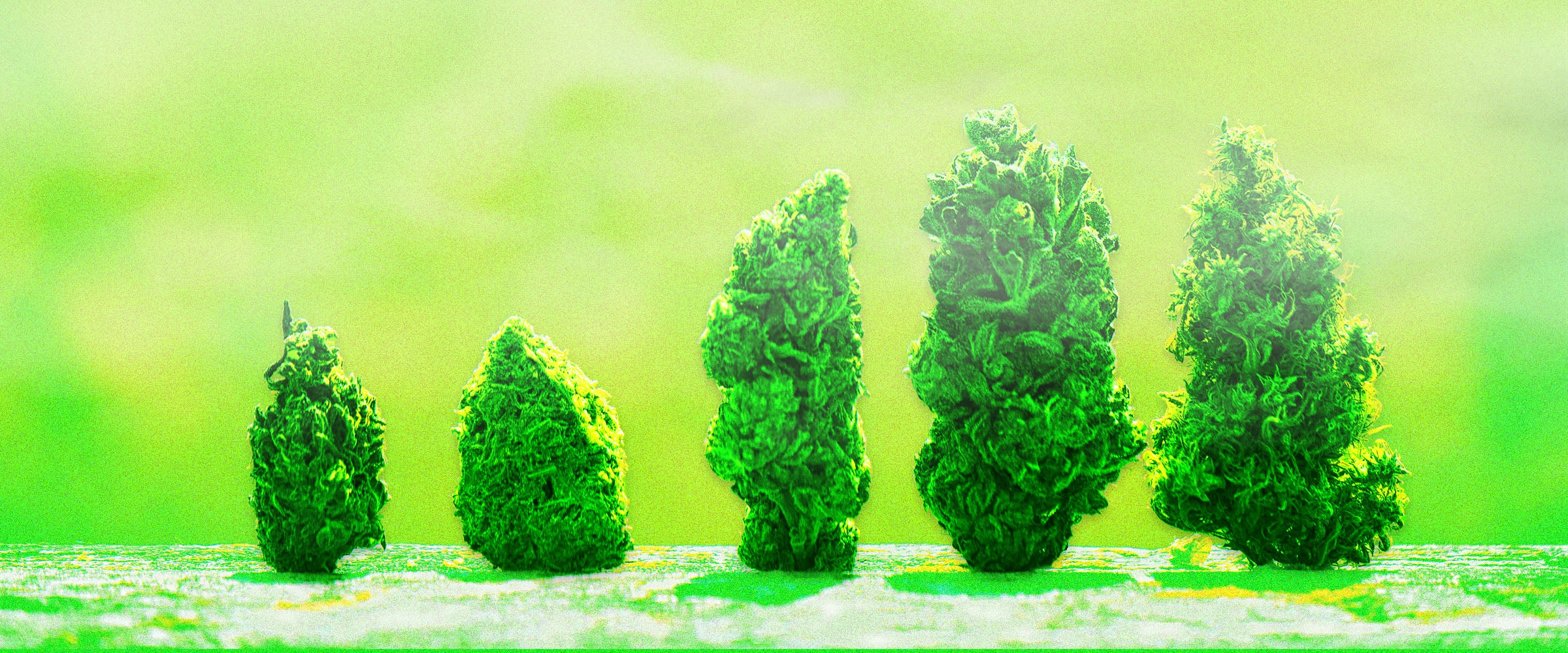The cannabis industry — and before its more official, legal incarnation, your friendly neighborhood weed dealer — has forever suggested that different weed strains yield different overall effects. Their logic goes something like this: Each individual strain contains distinct levels of THC and CBD, and therefore, each generates a unique high, based on that blend.
For instance, check out this Leafly review of Green Crack: “Few strains compare to Green Crack’s sharp energy and focus as it induces an invigorating mental buzz that keeps you going throughout the day.” Now compare that to this review of Bubba Kush: “From head to toe, muscles ease with heaviness as dreamy euphoria blankets the mind, crushing stress while coercing happy moods.”
These reviews clearly state that these two strains offer two decidedly different effects, and many people within the cannabis community might go on to argue that varying amounts of THC and CBD are responsible for these differences. But apparently, that message might be a little misleading, because new research has found that every weed strain contains, for all intents and purposes, the exact same levels of THC and CBD.
Lead study author and University of British Columbia Okanagan chemistry professor Elizabeth Mudge more succinctly explains her findings in a press release: “A high abundance compound in a plant, such as THC or CBD, isn’t necessarily responsible for the unique medicinal effects of certain strains.”
But anyone who regularly smokes weed knows damn well that different strains yield different effects (because please, God, don’t say that we’re really all that gullible). So the question must be asked: What actually causes these differences?
Leading medical cannabis expert Dustin Sulak initially points to so-called terpenes. “These are plant compounds found in cannabis (and elsewhere in the plant kingdom), abundant in essential oils, and [they’re] highly active in small doses,” he explains. “For example, cannabis that smells of citrus likely contains the terpene limonene, [which is] also found in citrus fruit. Limonene has demonstrated antidepressant properties and other benefits in clinical studies.”
“Cannabis that smells like pine trees likely has high levels of alpha-pinene, a terpene found in pine needles that has been shown to boost memory and relax the airways in the lungs,” Sulak continues. “Cannabis that smells like lavender likely has alpha-linalool, a terpene that produces muscle relaxation and sedation.”
Sulak goes on to explain that (in addition to terpenes) other trace components in individual weed strains likely contribute to their unique effects. “A recent study on breast cancer compared [the effects of] whole-plant cannabis extract to pharmaceutical-grade THC on multiple types of breast cancer,” he says. “The dose of THC was the same in both groups, but the whole-plant extract showed better anti-cancer effects. The authors also tried adding terpenes to the pure THC and didn’t reproduce the effects of the whole-plant extract, indicating that there are likely trace cannabinoids (or other actors, like flavonoids) responsible for the synergistic effects in the whole plant.”
All of which means that THC and CBD, despite being the most-marketed aspects of weed, are only two small parts of a largely misunderstood plant (and its largely misunderstood effects) — a concept that Mudge admittedly touched on in the previously-mentioned press release. “Understanding the presence of the low abundance cannabinoids could provide valuable information to the medical cannabis community,” she says.
So until scientists are able to accurately dissect the complexities of Canada’s new favorite plant, maybe take those budtender recommendations with a grain of keef.

